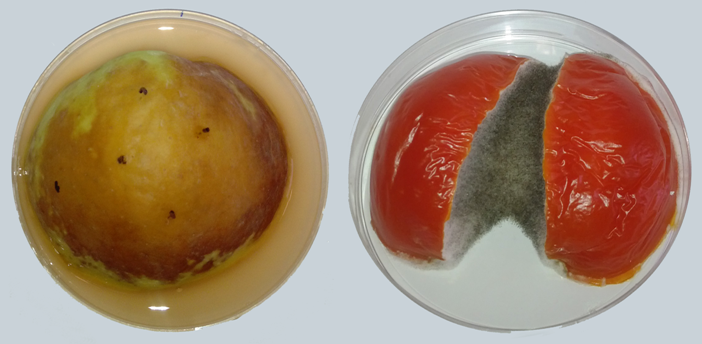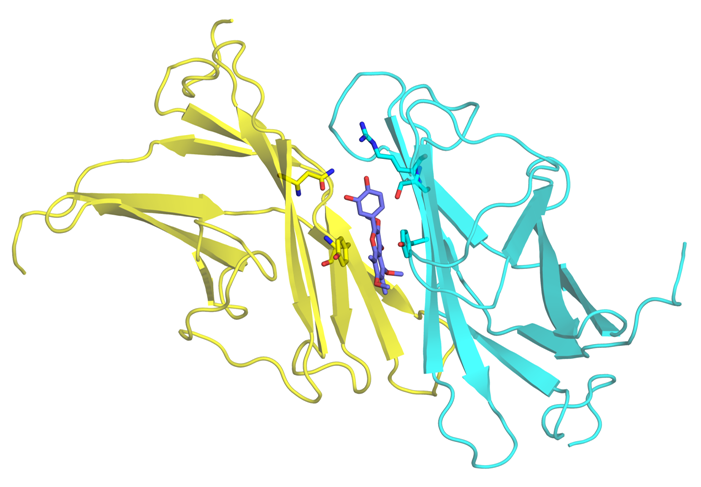A fungal infection that could help researchers to understand some allergies

Researchers from UPM have revealed how mold from humidity caused by rotting fruits and vegetables unfolds a surprising strategy to infect plants.
A team of researchers from Centre for Plant Biotechnology and Genomics (CBGP, UPM-INIA), has published the results on Alt a1 in an article released in Scientific Reports from the Nature group. Alt a1 is a strongly allergenic protein found in certain endophytic fungi species that causes severe asthma.
This study provides better understanding of the role played by this protein in the pathogenicity of the fungus. Additionally, the mechanism identified in plants can also provide information of clinical interest about respiratory diseases and allergies caused by these fungi.
Spores of certain Alternaria fungi that appear as mold in plants of most crops are present in the atmosphere throughout the year. Alt a1 is a strongly allergenic protein present in the spores of Alternaria alternata before germination. Alt a1 is responsible for infections and common respiratory conditions and is also considered as the major allergen associated with chronic asthma.
The pathogenic action of this protein is linked to the production of certain toxic compounds and the increasing production of reactive oxygen species by plants that are toxic agents causing cell death. Alt a1 interacts with defense proteins that plants express when are attacked by inhibiting their activity. The Alternaria spores remain on the surface of the plant without inducing symptoms while waiting for the right moment to germinate. When this occurs, the spores provoke a cascade of processes that had been largely unexplored until now.

In order to understand these processes, researchers from Biotecnología Vegetal group at CBGP (UPM-INIA) studied these processes at a molecular scale. In addition to revealing details of the infection in plants, the molecular responses to the presence of Alt a1 could provide clues about the answers associated with the development of allergies and other human disorders.
Results reveal that Alt a1 acts with a compound (a ligand) which is the main actor in the infection. After accumulation in the spores, the protein is released in the presence of moisture. However,a derivative of quercetin and a member of a family of secondary compounds widespread in plants, flavonoids, are also present in fruits and vegetables.
The following scenario for the versatility of Alt a1 is proposed. When Alternaria species germinates, the infected plant expresses pathogenesis-related proteins and produces free radicals as a defense response. Alt a1 is released mainly as a tetramer carrying its flavonol ligand. When the Alt a1 ligand complex reaches other plant compartments, the pH changes and the ligand is released.
Then, the combined action of Alt a1, blocking certain defense proteins, and ligands removing the free radicals disarms the defense responses of the plant and eases the infection. Likewise, if the Alternaria alternata spores are in the air, a person can inhale them and reach the bronchial epithelium. Along the way toward eventual immune system responses, Alt a1 must go through regions of changing acidity; thus, the break of its aggregates and release of the ligand would trigger molecular responses analogous to the ones found in the plant.
This mechanism can provide clinical information of great interest about common respiratory disorders (such as allergic sinusitis, rhinitis, pneumonitis and bronchial asthma) and other allergies caused by these fungi.
More information: María Garrido-Arandia et al. Characterisation of a flavonoid ligand of the fungal protein Alt a 1, Scientific Reports (2016). DOI: 10.1038/srep33468
Journal information: Scientific Reports
Provided by Universidad Politécnica de Madrid


















